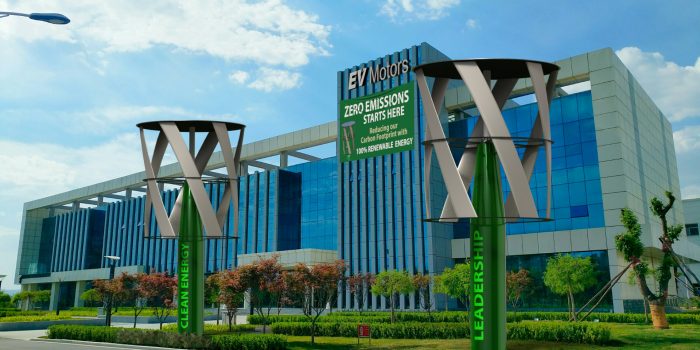Introducing the Wind & Solar Tower (WST), a revolutionary solution that harnesses renewable energy from both wind and solar sources. This cutting-edge technology not only lends support to the electric vehicle (EV) industry by reducing expenses and environmental impact but also yields a substantial 234,154 kilowatt-hours of clean energy each year.
To put this in perspective, it’s equivalent to providing power for 810,000 miles of emissions-free driving from a single installation. The inception of the WST dates back to 2007 when Jim Bardia, based in Orlando, embarked on a mission to enhance wind energy generation for agricultural purposes.
After numerous years of dedicated effort and innovative thinking, he gave rise to the impressive tower we see today. Its fundamental design principles revolve around bolstering strength, minimizing friction, ensuring redundancy, and simplifying assembly and maintenance, much akin to the engineering principles guiding high-performance race cars.

The evolution of the Wind & Solar Tower commenced in 2007 when Jim Bardia, hailing from Orlando, embarked on a mission to enhance wind energy generation for agricultural use. Following years of arduous labor and inventive thinking, he brought to fruition the tower we see today. Its foundational design principles revolve around reinforcing strength, reducing friction, ensuring redundancy, and streamlining assembly and maintenance—reminiscent of the engineering principles that underpin high-performance race cars.
This groundbreaking technology made its debut at the Detroit Auto Show in the United States. Its distinctiveness lies in its ability to harness both wind and solar power to generate electricity, setting it apart from traditional power generation methods. Its efficiency and cost-effectiveness are particularly noteworthy, as it can produce a substantial amount of electricity without relying on fossil fuels.

A crucial feature that enhances the efficiency of the vertical-axis wind turbine (VAWT) in the WST is the floating-bearing levitation hub. This innovation minimizes stress and friction through the use of powerful magnets, improving performance and ensuring reliability. Consequently, the tower can generate electricity even when the wind is as gentle as five miles per hour, and it can endure winds as fierce as 75 miles per hour.
Additionally, a digitally controlled multi-speed gearbox empowers the WST to generate power efficiently across a broad spectrum of wind speeds while facilitating smooth startup, a departure from the traditional wind turbine’s behavior. Moreover, the tower boasts self-cleaning solar panels on its summit. These panels not only ward off performance degradation caused by dirt buildup but also enhance electrical output by an impressive 38%.
The WST’s modular design lends it adaptability for diverse requirements, and its components are effortlessly replaceable with plug-and-play modules, making maintenance a breeze. Remarkably, the tower can charge up to six vehicles simultaneously and generate ample electricity annually to power more than 9,400 electric cars. Any surplus energy can be fed back into the grid or stored in a substantial battery with a capacity of 1008 kilowatts (equivalent to one megawatt).
Jim Bardia underscores the urgency of fortifying the U.S. electric grid to meet escalating energy demands sustainably. He envisions that solutions like the WST, capable of producing their own power without relying on conventional power plants and fossil fuels, can play a pivotal role in achieving this vital objective.


